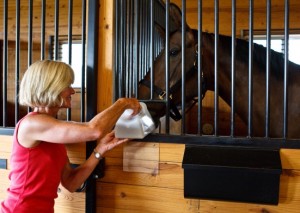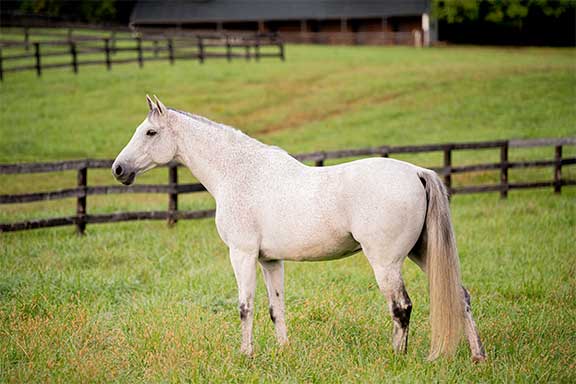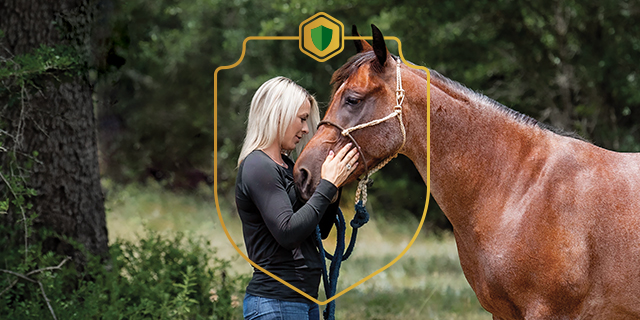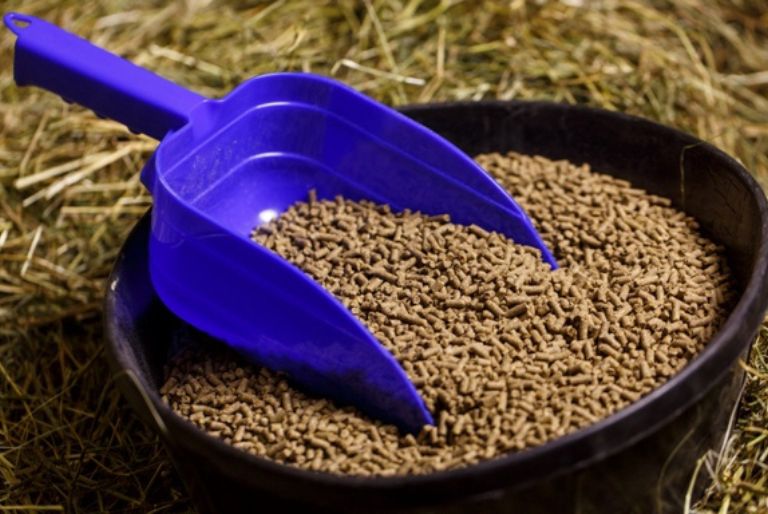Nutri-Bloom Advantage®
Helping Your Horse Get More Out of Every Bite
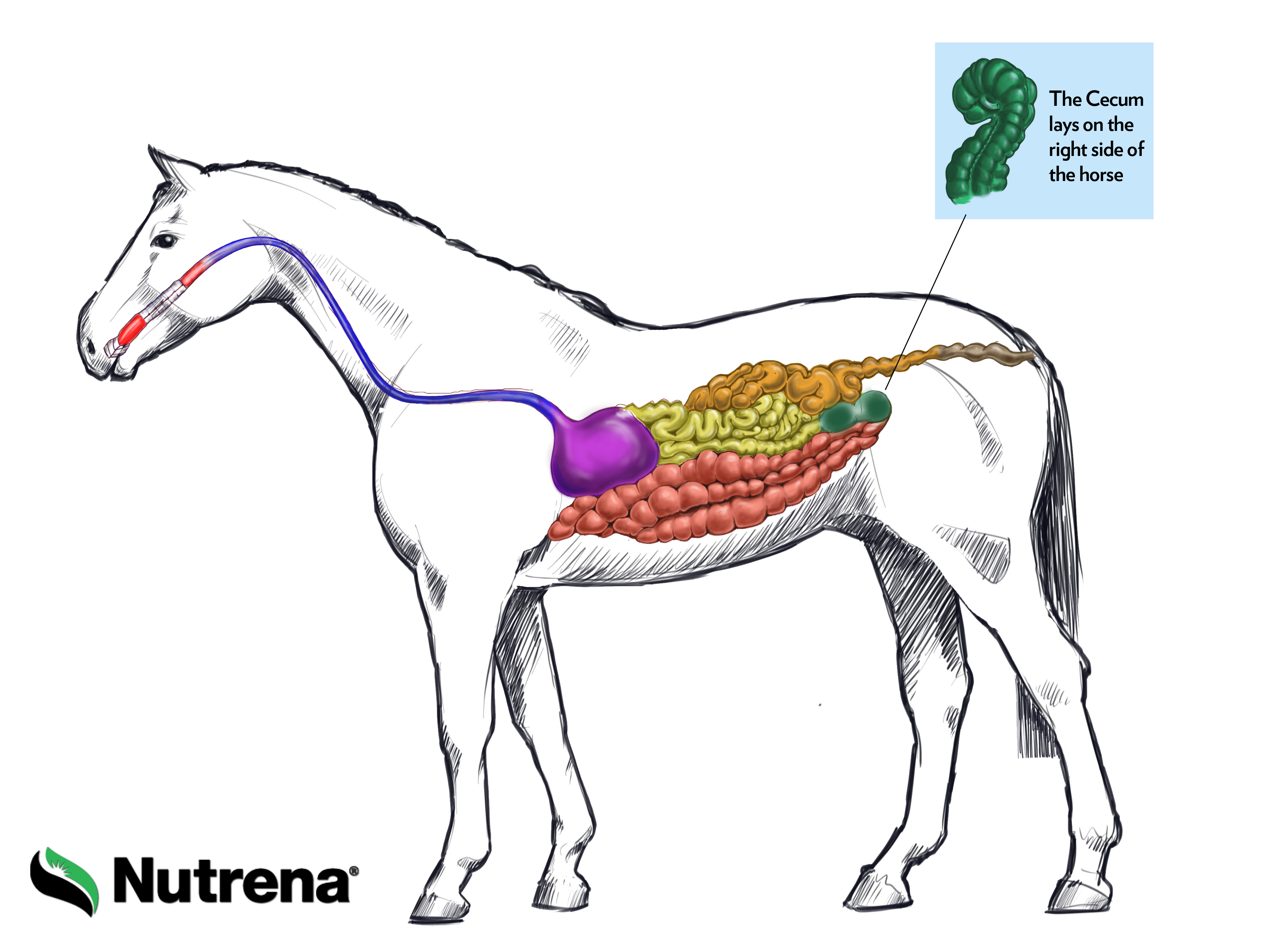
Improving Digestive Efficiency
What if something in the feed formula could help a horse better digest the hay, pasture, and feed they eat?
Take for example, an older horse that struggles with maintaining a good body condition. This struggle may be further compounded by difficulties in acquiring good quality forage due to a bad hay year, rendering the largest part of this horse’s diet of limited nutritional value and an added frustration to the horse owner.
Nutri-Bloom Advantage®, a proprietary digestive health blend built into SafeChoice® Feeds, can help overcome some of these obstacles. By improving the horse’s digestive efficiency, more calories can be extracted from the less-than-ideal hay. Plus, the horse also benefits from the balanced nutrition from Nutrena SafeChoice line up.

Understanding a Horse’s Digestion
How much of an improvement in digestive efficiency does Nutri-Bloom Advantage® actually provide to the horse?
It can be difficult to see the direct benefits Nutrena® feed provides to the animals who eat it. Nutri-Bloom Advantage® is one way we support gut health and fermentative digestion, helping horses get more nutrition out of every bite of feed and forage they consume. Secondary benefits to improved gut health and subsequent horse health become readily obvious with improved hair coat and hoof quality, improved body condition and muscling, just to name a few.
The direct impact of Nutri-Bloom Advantage® on digestive efficiency is not as obvious to the naked eye because it takes place in the hindgut, protecting the horse from the inside out. This is where good research comes in. A trial at Texas A&M University set out to quantify the beneficial impact Nutri-Bloom Advantage® has on fermentative digestion in horses.

Digestibility Trial at Texas A&M University
What was the Key Takeaway?
Horses who consumed diets fortified with Nutri-Bloom Advantage® demonstrated up to 15% improvement in apparent fiber digestibility from their hay and feed concentrate rations. An improvement in digestive efficiency means more calories are available from the same amount of feed and forage. Another way to look at it is less is required to meet the same energy requirement.
Either way you look at it, improved digestive efficiency allows horses to extract more energy out of every bite they take. Whether your horse is a hard keeper or a hard worker, when every bite counts towards your horse’s health and performance, choosing a Nutrena® feed formulated with the Nutri-Bloom Advantage® is an easy and effective way to make your horse’s entire diet extra nutritious. Nutri-Bloom Advantage® helps your horse get more calories out of every bite. *CON + NBA trt group, n = 8 (One horse was removed from this treatment group)
*Excludes SafeChoice® Maintenance Feed
Digestibility Trial Details
-
How many horses were studied?
Eighteen mature geldings were obtained from the Texas A&M mounted cavalry herd. All horses received the same backgrounding diet for 30 days prior to the start of the trial. Utilizing a randomized complete block design, horses were blocked by age and body weight, then randomly assigned to one of three dietary treatments (n = 9 horses*) for the 28-day trial.
-
What were the Dietary Treatments studied?
In addition to moderate quality coastal bermudagrass hay (Cynodon dactylon) provided at 1.5% BW (as fed) per day, dietary treatments consisted of either an unfortified pellet (CON), or the same pellet with Nutri-Bloom Advantage® fortification (CON + NBA) provided at 0.5% BW (as fed) per day. Both pelleted diets were isocaloric (same calorie content) and isonitrogenous (same crude protein content). Daily rations were divided into two meals and provided in individual stalls. Horses were housed in dry lot pens in between meals.
-
What was the Dietary Acclimation and Total Collections?
Acclimation to respective treatment diets occurred from trial days 1 through 24, and total fecal collections were conducted on trial days 25 through 28. Over the four-day total collection period, horses were fitted with collection harnesses. The harnesses were emptied every 6 hours, total fecal weight was determined, and a representative subsample was frozen for later analysis of nutrient apparent digestibility.
-
What was the Nutrient Analysis?
Feed intakes and refusals were recorded at each meal. All dietary components (hay + concentrate feed) and fecal samples were analyzed for dry matter (DM), organic matter (OM), crude protein (CP), acid detergent fiber (ADF), neutral detergent fiber (NDF), and gross energy (GE) and apparent digestibility for each of these nutrients was calculated. Pre-planned contrasts were made in SAS, and significance was defined as P < 0.05 and a trend for significance defined as P < 0.15.
-
What were the Digestibility Trial results?
There was a main effect of diet for NDF (P = 0.03) and ADF (P = 0.06) fiber digestibility. When CON and CON + NBA diets were compared, apparent digestibility of NDF and ADF fiber tended (P = 0.13) to be greater for CON + NBA horses compared to CON horses.
Sources
Coverdale, J.A., E.D. Lamprecht, P. Kropp, I. Yoon, J.L. Lucia, K.N. Winsco, A.E. Hanson, and C.M. Warzecha. 2013. Influence of prebiotic and probiotic supplementation on apparent digestibility in mature geldings at maintenance. J. Anim. Sci. 91(E-Suppl. 2)
Get a FREE Consultation
Fill out our Contact Us form for an equine nutrition expert to provide 1-on-1 recommendations for your feeding program.

